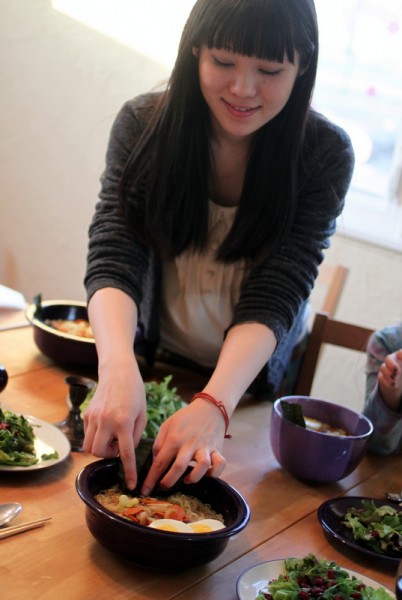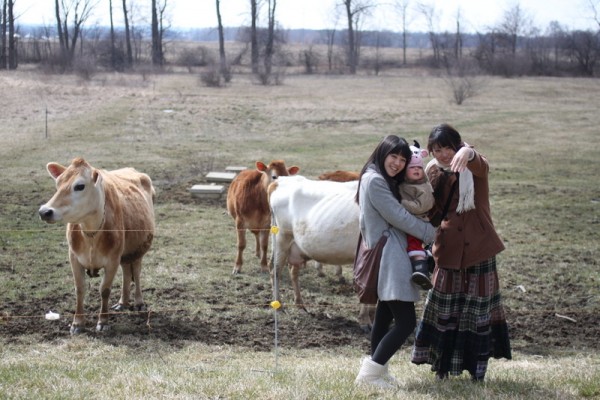Unlike 2012, and 2011, and 2010, we have no garden plans this year.
We certainly have lots of seeds and lots of seedlings and lots of perennial edibles. But instead of a predestined place, our strategy seems to be "this plant will die if it doesn't go in the ground now, better build a bed!"
So it was with the hoophouse - we invited people over for a build and later decided we should actually use the thing. We layered soil and peat moss over cardboard and planted cold-hearty vegetables.
Then strawberries were available at City Folk's Farm Shop. Oooh! We want to grow those but where to put them? Hoophouse sounds good and perhaps the plastic will protect the sweet berries from hungry rodents and birds.
Same with the potatoes and onions. The time to plant came upon us and we quickly put together the first pieces of a keyhole garden for family vegetables.
The placement of the orchard, in a sunny, well-drained location toward the rear of the property, was set in our minds a few months ago. We planted there in rows for lack of a better idea. We hope to eventually put in alley crops and understory edibles ala Restoration Agriculture. If the deer ravage the back orchard, we're raising three fruit trees in the chicken yard for insurance.
So far, we've double dug planting holes, tilled beds, built a hugelkultur pile (more on that later), built a raised bed for root vegetables, and made many lasagna-style beds including Lil's garden pictured below. Our soil building materials included straw, Price Organics premium soil blend, and Zoo Brew from City Folk's Farm Shop, peat moss from the big box hardware store, and composted leaves and rabbit poo salvaged from yards.
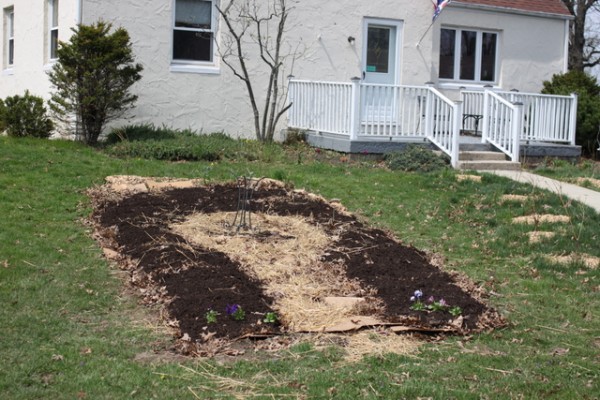
Garden Goals
Though we don't have a pretty plan, we do have a clear set of long-term goals:
1) Convert lawn to growing edible, habitat, or ornamental plants
2) Choose perennial and native varieties wherever possible
3) Plant a diversity of species in a diversity of growing spaces
4) Co-exist with the natural environment including remediating low areas to more wetland-like habitat
5) Garden with ecological and permaculture principles in mind
6) Save seeds for economy, biodiversity, and micro-climate adapatation
Ultimately, we want to provide our family with a sustainable, year-round food supply and welcome others to learn from the example gardens we create.
Consequences of Experimental Gardening
This seemingly haphazard way of planting may or may not work out for us. Certainly some plants will thrive while others may not be so lucky. Our gardening eyes may be bigger than our stomachs in terms of how many beds we can feasibly plant with the time and resources we have.
But at the end of the year, I expect we will have learned a lot about what works in the conditions we have. The eggs-in-every-basket strategy to building beds and planting over a hundred varieties of edibles will be a sort of instant natural selection. Perhaps we'll learn that deer prefer the branches of apple trees to pear trees. Or that strawberries don't receive enough pollination to fruit in the hoop house. Or that no one but humans likes collard greens.
It's all too early to tell now. Having the patience to wait and see which eggs hatch is one of the life lessons of gardening.

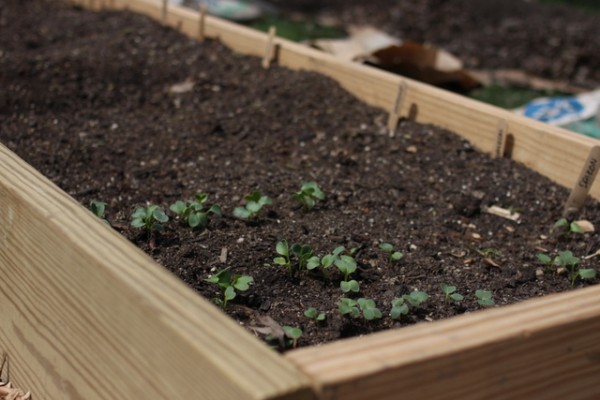

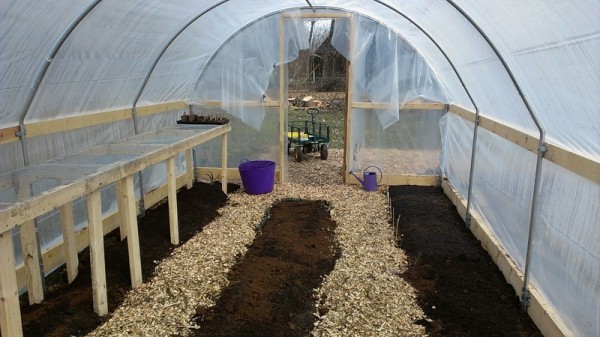
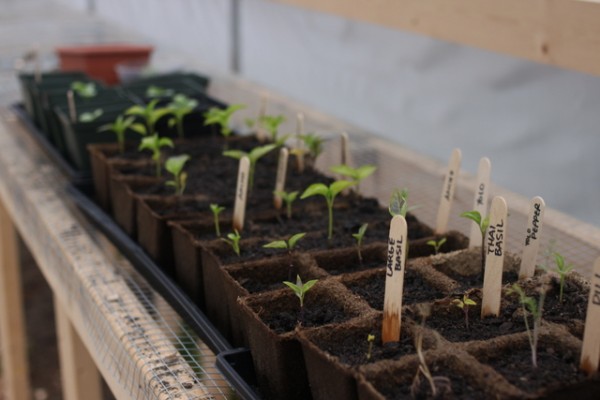
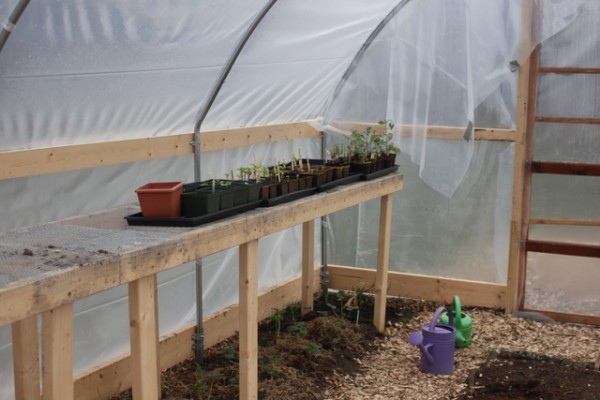
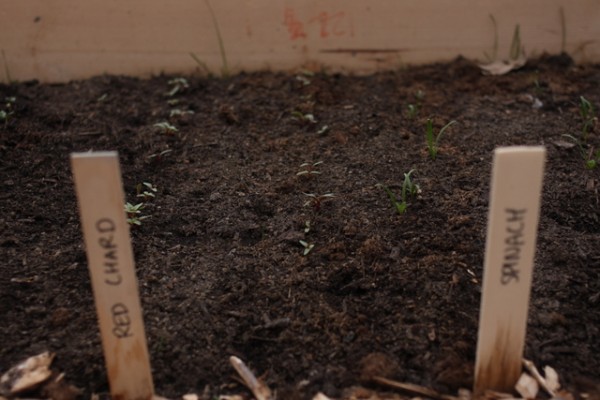

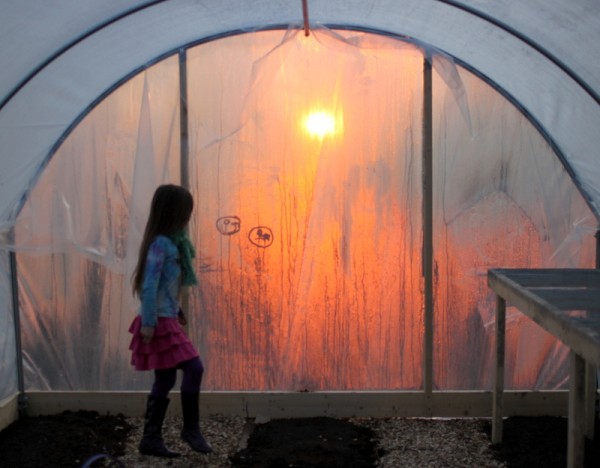
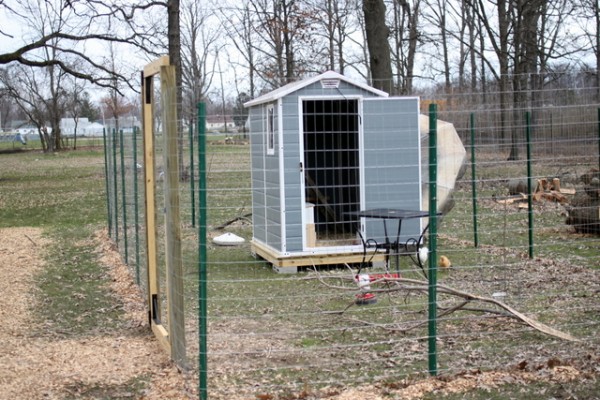 This blog has been fairly quiet recently because we're taking advantage of dry weather to work on dozens of outdoor projects. Setting up a homestead is enough work to occupy us for years!
This blog has been fairly quiet recently because we're taking advantage of dry weather to work on dozens of outdoor projects. Setting up a homestead is enough work to occupy us for years!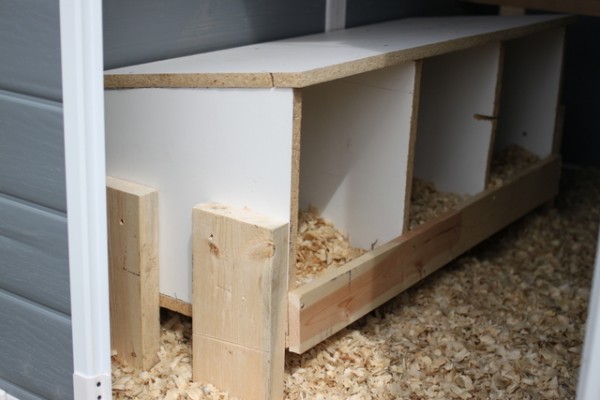
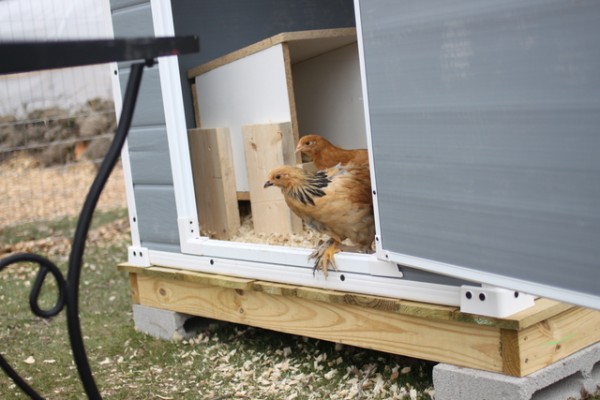
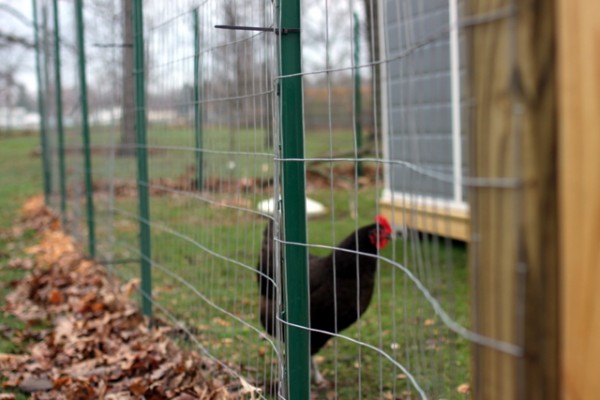
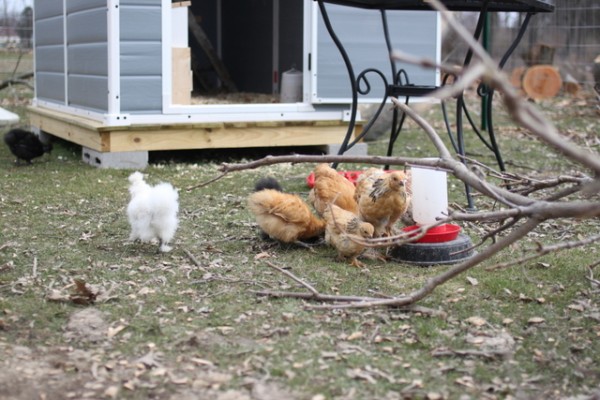
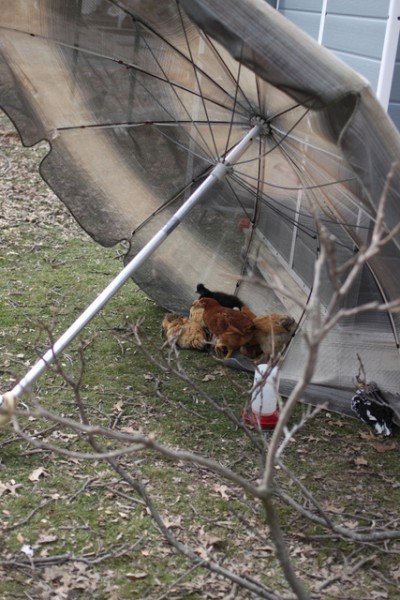
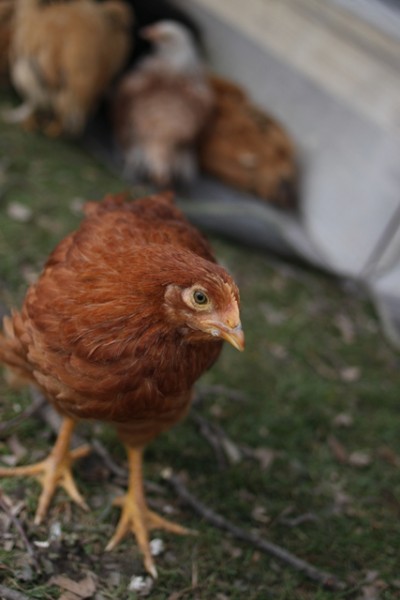
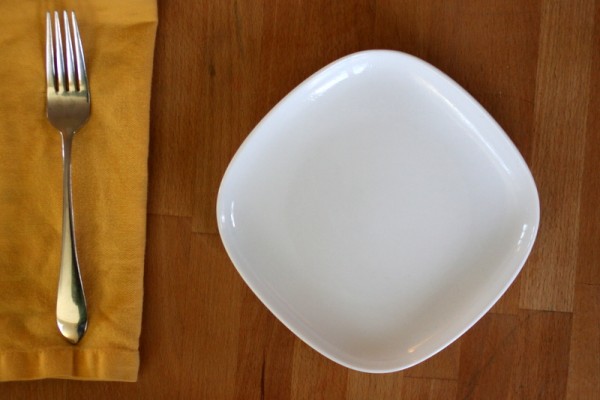

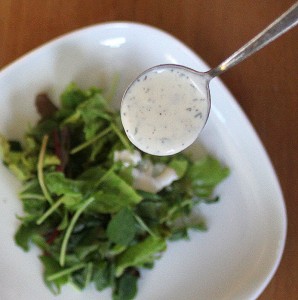

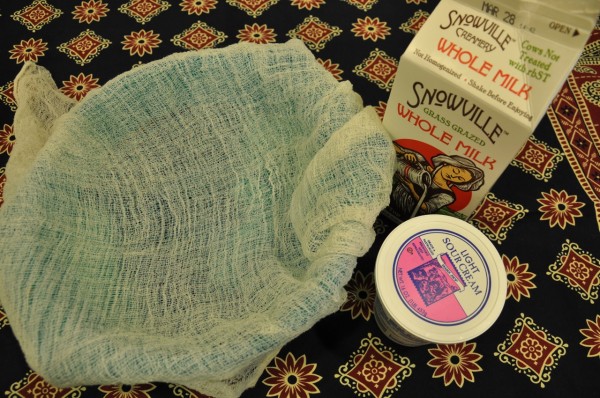
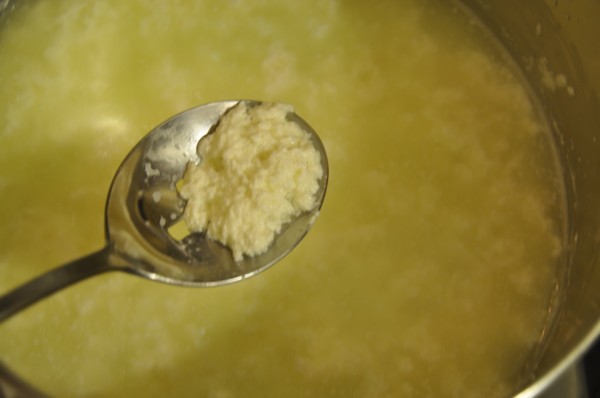
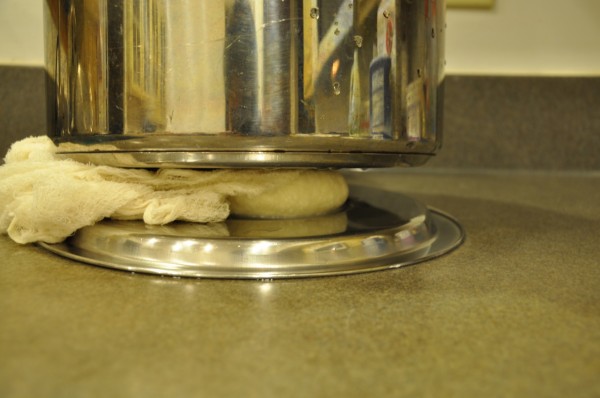
 by Neelam Batra.
by Neelam Batra.
